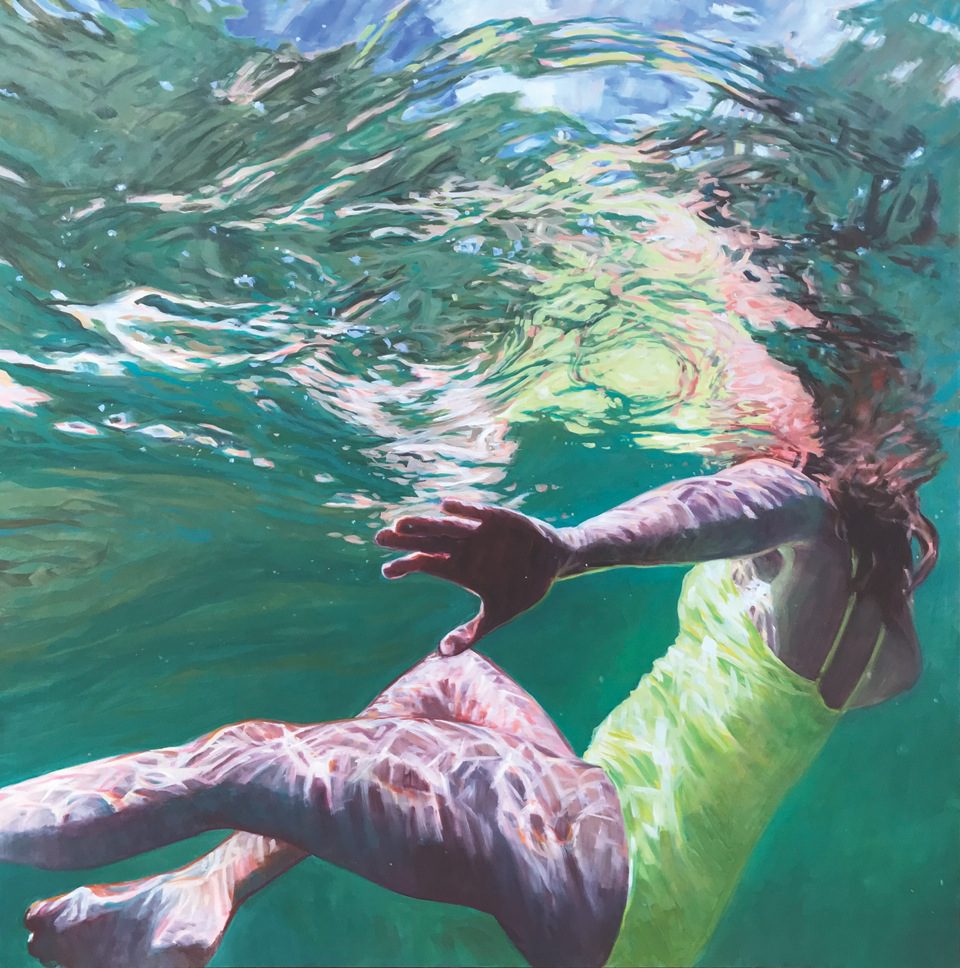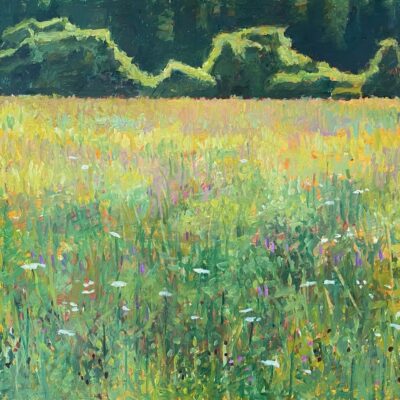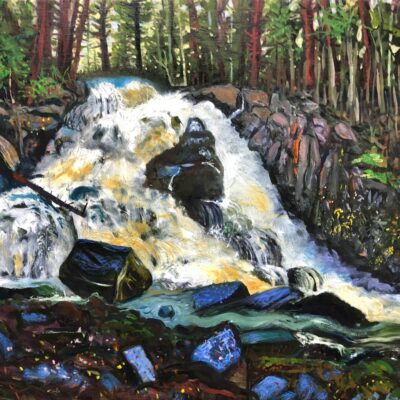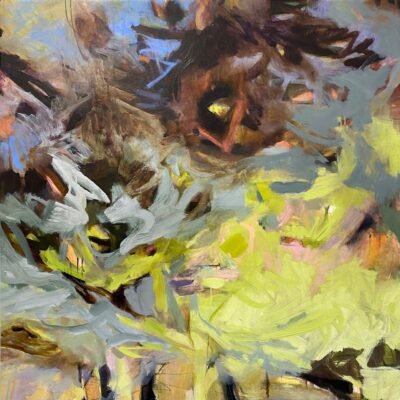
Ellsworth Courthouse Gallery Fine Art opens for the season on May 2 with “Jessica Lee Ives: The Biology of Water” and their annual Spring Show, which highlights new work by 20 artists.
The shows, which are on view at the gallery through June 3, are free and open to the public. They can also be viewed online at www.courthousegallery.com.
The Spring Show participating artists are Susan Amons, Janice Anthony, Philip Barter, Matt Barter, Lise Becu, Jeffery Becton, Judy Belasco, Ragna Bruno, Tom Curry, Kate Emlen, Philip Frey, June Grey, William Irvine, Philip Koch, B. Millner, Ed Nadeau, John Neville, Linda Packard, Alison Rector and Lilian Day Thorpe.
In her solo show, Ives explores the new biology of water through paintings of a lived experience immersed in the light, water and the magnetism of our natural environment.
In her own words:
These paintings reflect a lived experience of the new biology of water. The human body is mostly water; in fact, at the cellular level it produces multiple gallons of its own perfect form of water every day. This water, called fourth phase water, is structured in a liquid crystalline form capable of transmitting and receiving information to and from the world beyond our skin. Two years ago, I was introduced to the work of Dr. Gerald Pollack, who discovered the fourth phase water, and my life as a swimmer, fisher, splasher, and wader was transformed. I dove into the deep end of the pool.
The fourth phase of water is a gel state between liquid and solid. It is also called structured water because it contains an extra molecule of hydrogen and an extra molecule of oxygen. As it turns out, it is not H2O, but H3O2 that comprises seventy to ninety percent of the human body. What transforms H2O into the more viscous H3O2 inside our bodies? Sunlight.
The full spectrum of sunlight is forty-two percent infrared light, which at 1200 nanometers, is the perfect frequency for creating structured water. When the sun shines on a body of water — be it the ocean, a cup of tea, or a human cell — water molecules begin to vibrate. This vibrational energy transfers through molecules like ripples on a pond. They move closer together, stabilize and create a crystalline lattice capable of storing and releasing energy (like a battery), excluding impurities (like a filter), and processing information from the environment (like a semi-conductor). We can also expose ourselves to structuring infrared frequencies via touch — the squeeze of a hug, the warmth of your pet, the therapy of a massage.
Thigmomorphogenesis (from Greek thigma, to touch) is a response in plants that enables them to alter growth patterns based on the mechanical sensation—or touch—of wind, water, snow, and even passing animals. As a healthy human and a curious painter, I continue to grow according to the touch of water. I also find that the more I apply sunlight to my life, the more my experience of water crystalizes.
May these paintings vibrate with energy and clarity, showing the human body—our bodies—immersed in the water and light of the natural, integrated, biological environment for which we were optimized.
Courthouse Gallery is at 6 Court St., Ellsworth. For more information, call 667-6611, or visit www.courthousegallery.com.
Categories: Artists Reception, Ellsworth, exhibitions, gallery, openings, shows
Tags: art




